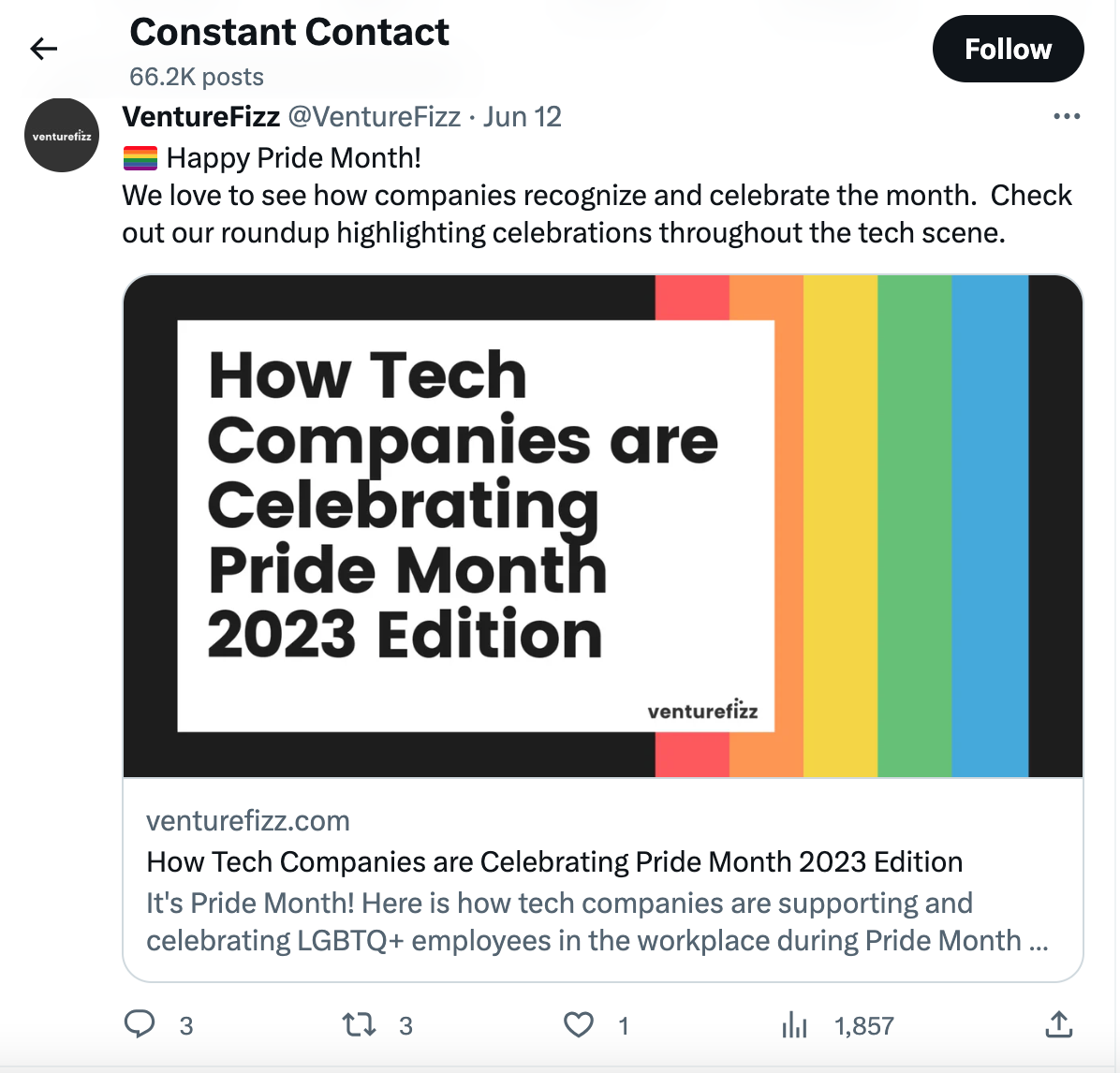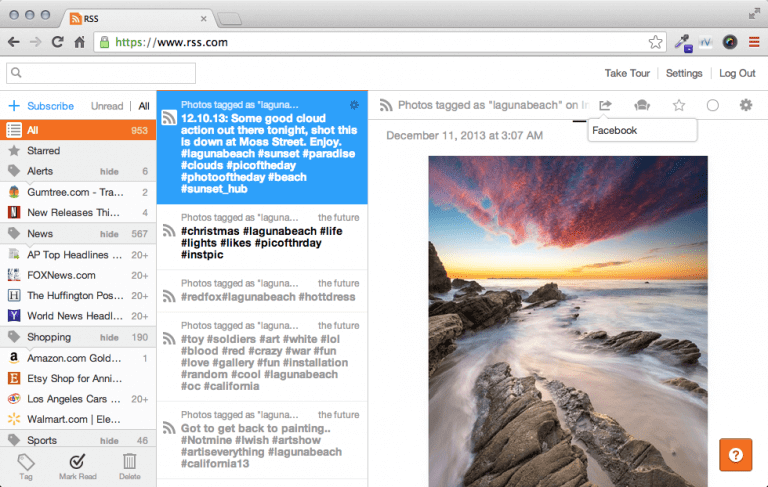
If you’ve heard it once, you’ve heard it a thousand times — you need to post on social to stay connected to your target audience. But you have a business to run, and high-quality content doesn’t grow on trees.
It does, however, grow in the minds of other content creators. The internet is full of material your audience would love, and they’ll appreciate you even more if you share it.
That’s the crux of content curation for social media. It’s one of the best-kept secrets in digital marketing because it’s a win-win for everyone. You spend less time creating new content while adding value and fresh perspectives to your channel(s).
But what is content curation? Here’s what to know about how it works — and why it’s a can’t-miss content marketing strategy.
Introduction to content curation on social media
Even if you haven’t started curating content for your followers, you probably already do it in your personal life. Think of the last time you came across an article and sent it to a friend, possibly with a quick personal note like Hey, Jeff, this reminded me of what we talked about the other day.
That message is content curation in a nutshell. You thoughtfully send something you know your audience will love, adding some insights to move the conversation forward.
What is curated content, and how do I find it?
Curated social content is any marketing content you choose and share with your followers. It can be user-generated content or something published via another website or news publication.
You can curate an entire piece or select elements of multiple pieces to create something original. Some businesses use social media to post infographics — visualizations of several statistics on a topic — usually gathered from various sources.
The value of content curation for social media marketing
Content curation lets you offer more value without reinventing the social media wheel. Instead of creating new content on a well-covered topic, you share the most valuable existing material you can find.
Content curation has the same relationship-building power as original content creation but with less time investment from you. Plus, it adds diversity to your content portfolio. You can’t say everything yourself, but you can draw attention to insightful things others have said.
Here’s an example. In June 2023, Constant Contact highlighted a Pride Month post from VentureFizz:

You become a more valuable resource for your audiences when you share new voices. You develop a reputation as a community builder and a go-to source for exciting ideas.
How content curation complements content creation
Curation is a powerful addition to your social media presence, but it’s not a complete content strategy. Original content is also important to build your reputation and help followers learn about your brand.
Original content creation should be the bulk of your social media strategy. It develops your voice and presence so followers will be interested in what you share. Content curation for social media is the icing on the cake, adding variety and making regular posting easier.
Best practices for curating content on social media
As the best content marketers know, each post is just the tip of the strategic iceberg. Any shared piece, curated or created, results from in-depth strategizing and planning. Here’s how to do that well.
1. Define your target audience and goals
As a social media curator, your job is to share content your target audience can use. That means understanding what topics interest your audience, what social platforms they prefer, and what problems they need you to solve.
For example, suppose you sell women’s clothing and find a piece on “what to wear after 40.” That piece would resonate perfectly if your target audience fits the “over 40” demographic, but it will fall flat if you want to build a following among 20-somethings.
Once you know what your audience needs from your curated content, you can start thinking about your content curation goals. Specify what you hope to achieve by adding curated content to your social media channels. Here are some examples:
- More comments, shares, or likes
- More followers
- A reputation as a thought leader
- Backlinks or tags from people who repost your curated content
Choose specific yet realistic goals. A hundred more followers this quarter would be excellent, but consider how many you usually gain in a “good” month. Start there and maybe add a few more to keep yourself motivated.
2. Identify credible and relevant sources
Everything on a person’s social media page says something about them. The same goes for your business page. If your followers know you share information from reliable sources, they’ll feel more confident clicking on your next post.
Always check content creators’ sources before sharing their material, especially if you’ve never curated their work. Trustworthy sources include:
- Market or consumer research groups
- Business analytics firms
- Trade and industry associations
- Reputable commercial publications
- Government agencies
- Academic journals
- Nonprofit organizations
If you share content with statistics or facts, always give credit and provide links back to the original source.
3. Curate a mix of content formats
Variety is a central selling point of content curation for social media. It allows you to share diverse viewpoints and present relevant content in multiple formats. The possibilities include:
- Blog posts and articles
- Short- and long-form videos
- Infographics
- Photos
- Memes and GIFs
- Webinar links
- Podcasts and recorded radio
The more types of content you share, the more ways you have to engage audiences. One audience member might scroll past your article links but click on an infographic because it’s brief enough to digest. Another might not have the time to watch a video but would skim through a blog post.
And remember, when you curate content, you can share material in new formats — including those you can’t create yourself.
For example, imagine you’re an independent accountant with a small firm in your hometown. You may not have the time or budget to conduct original research, host a podcast, or make high-budget videos, but you can share content from those who do.
4. Add value with insightful commentary
Content curation for social media involves more than clicking “share.” You can do that occasionally when the material speaks for itself, but most of what you share should get an introduction.
Remember, you curate social media to build your business. You want audiences to think of you as an insightful expert, even when sharing someone else’s original content.
You aim to introduce the content, explain why your readers will find it interesting, and convince them to click. A sentence or two will usually be enough.
If you’re unsure what to say about a piece, pick out a quote you love or a statistic that caught your eye. If a factoid inspired you to click “share,” it will likely inspire your audience.
5. Maintain a consistent posting schedule
Regular activity is vital to any successful social media strategy, but quality is more important than quantity. Instead of spamming your followers with dozens of articles and videos, choose the most valuable ones and space them out.
The ideal posting cadence varies by platform and media type. Here are a few guidelines to get you started:
- Instagram posts: No more than once per day
- Instagram Stories: Three to 10 per day
- X (formerly Twitter): One to three tweets per day
- Facebook: Three to seven posts a week
- LinkedIn: Three to five posts a week
Don’t worry if you don’t have enough content or time to post this often. Consistency is more important than volume. Be realistic about your capacity and develop a regular schedule that works for you. Consider using a content calendar, such as this one from Constant Contact:

Remember that content curation tends to be less time-consuming than content creation. If you’ve been sharing your blog posts twice a month on Facebook, try filling in alternate weeks with curated content.
And you don’t need to be active on every platform. Instead, choose the platform(s) that fit your brand and target audience. Remember, it’s better to have excellent content in the right place than so-so content everywhere.
6. Optimize content for each social media platform
Every social media channel has its personality. What works on Instagram often won’t thrive on LinkedIn, and your business’s most popular TikTok might not get attention on Facebook.
Consider what type of content works best on each platform. For example, images and short-form videos are ideal for Instagram, but blog posts and articles are easier to share on Facebook or LinkedIn.
Adjust your presentation for each platform if you share the same content on multiple social channels. Resize images based on each platform’s image size requirements and create captions to suit the channel’s audience.
7. Engage with your audience and encourage interaction
Think of each curated post as an opportunity to start a discussion. People engage with content that speaks to their interests, so highlight what you think is the most relevant part of an article for your followers. You can also encourage them to post their reactions and thoughts, especially for more in-depth content.
For instance, imagine you’re a real estate agent posting an article about in-demand home features. You might encourage readers to comment on their favorites or ask if they have any of those features in their current homes.
Participate in discussions whenever possible and appropriate. Stay positive, avoid getting into debates, and answer questions when you can. Remember, your goal is to build relationships and promote good feelings about your business. Comments like “Yes, we love that feature, too!” almost always land well.
8. Measure and analyze the performance of curated content
Measuring social media performance is essential, and curated content is no exception. The more you know about what your audience responds to, the easier it will be to choose pieces to curate in the future.
Start by reviewing your goals. Consider what you want your content curation for social media to achieve, and then figure out how you can measure success. Key performance indicators (KPIs) are data-linked metrics that tell you how close you are to your target.
Social media KPIs may include:
- Number of new followers
- Clicks to your website
- Conversions from social posts
- Number of new email contacts
- Number of comments and shares
Have a target for each KPI and review your data regularly. Pay attention to how each curated post moves you toward or away from your goals, and adjust your content curation strategy accordingly.
Tools and resources for social media content curation
Technology makes content curation for social media one of the most efficient tactics out there. Gone are the days when marketers had to post manually from each social media channel or spend hours looking for the right blog post. Thanks to these content curation tools, you can automate and customize the most time-consuming parts of the process.
Social media management tools
Content curation saves you time, but you still need to do the heavy lifting of social media management. You need to schedule and publish posts, respond to messages, and measure how much attention each post gets. A social media management tool lets you do it all from one account instead of switching back and forth between channels.
Content discovery platforms
If you had to find every piece of curated content by Googling keywords, the process wouldn’t be much of a time-saver. Content discovery platforms do the legwork for you, finding the right content based on your specifications.
Think of it like a product search on an ecommerce page — but instead of filtering the shoes you want by size and color, it filters content based on the original platform, hashtags, @mentions, and other guidelines you enter. As you refine your guidelines, the platform learns what you want and delivers more.
RSS readers and news aggregators
Like content discovery platforms, these tools deliver updates from your favorite sources to your inbox. RSS — short for Really Simple Syndication — fetches content from selected websites and creates a personalized feed.
Here’s what a typical RSS feed looks like:

News aggregators work similarly but focus on current events websites. Like RSS feeds, many news aggregators let you customize your feed by topic, so you primarily receive content with curation potential.
Elevate your social media strategy with content curation
Now that you’ve learned about the benefits of content curation for social media, including where to find content and how to present it to your followers, you’re ready to start developing your content curation strategy.
Begin by setting one specific goal you’d like your strategy to achieve. For example, if you’d like more traffic from social media, you might set the goal of 10% more clicks within the next six months. Then, experiment with a content discovery platform like Feedly or Post Planner. Start identifying content you believe will move you toward your goal and add it to your content calendar. Your strategy will evolve from there as you learn what content resonates with your audience. And remember to track the results!




